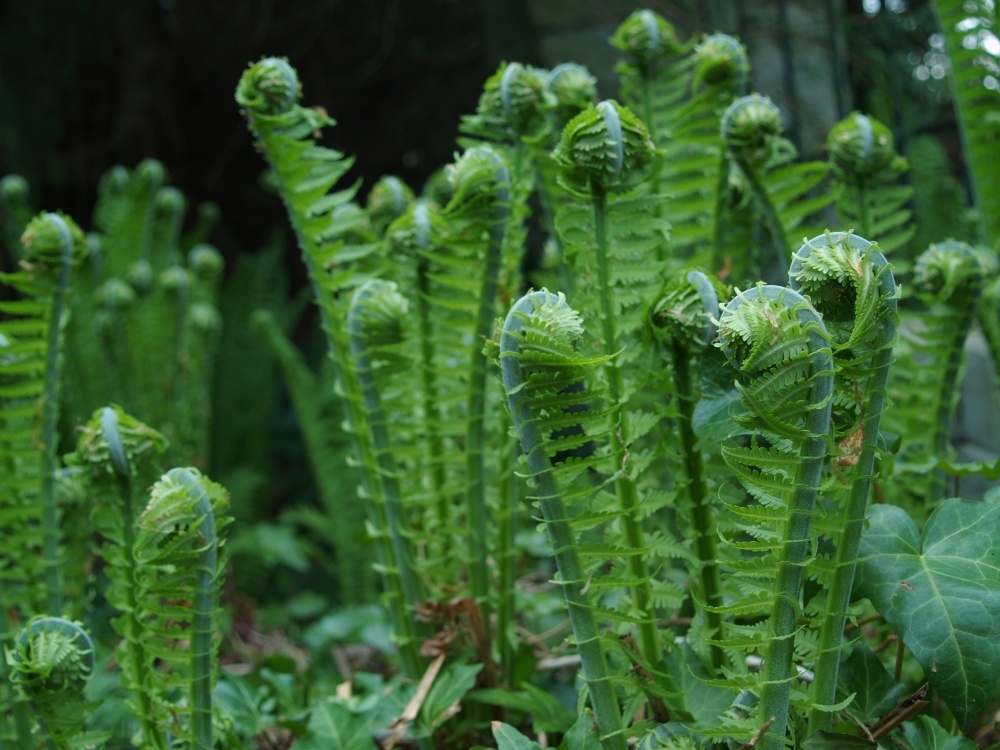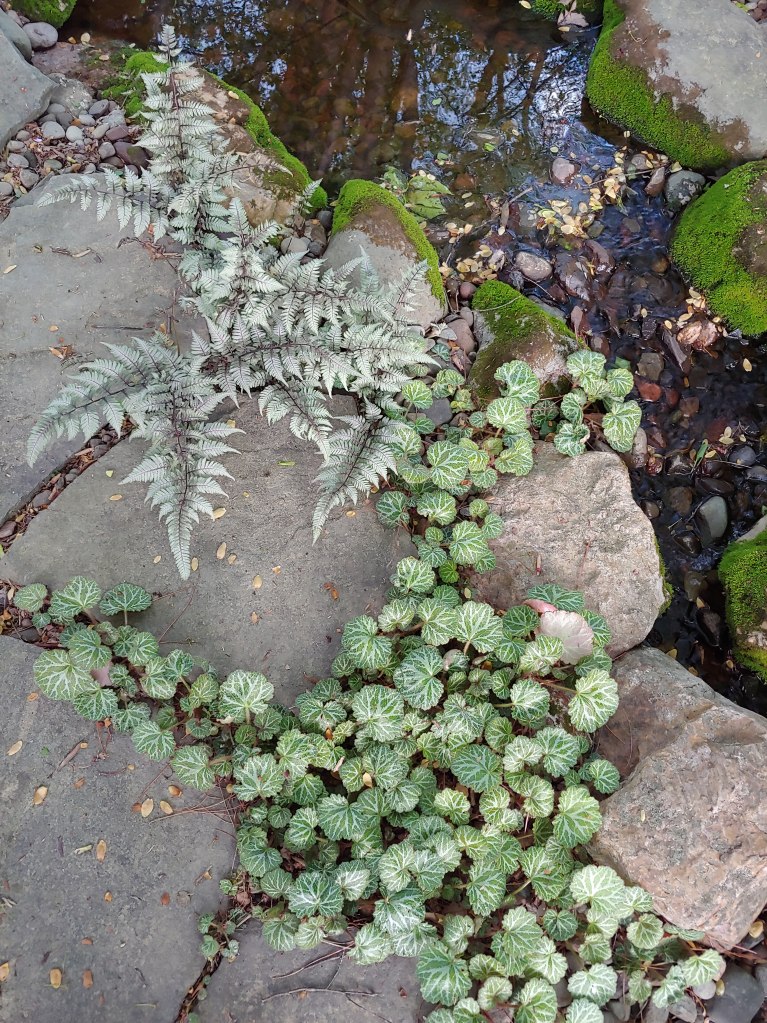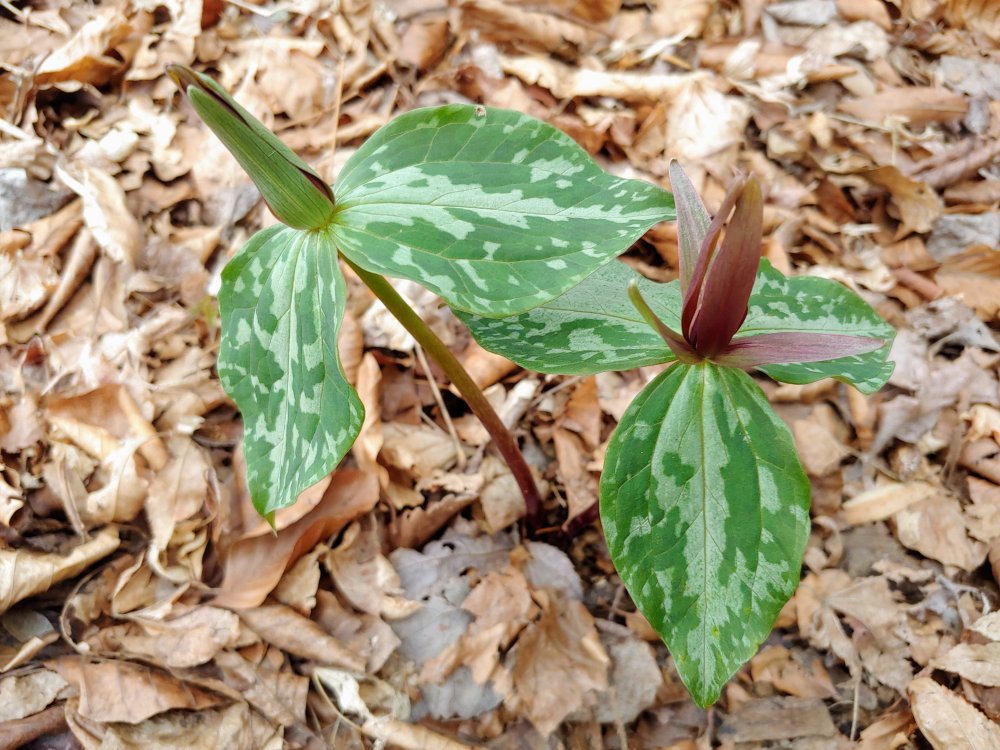Things are popping up all over the place. There are perennials and ephemerals (below) that I recognize and recall, and others that I have no idea what they could be. But, soon I’ll find out, and failing to recognize emerging old timers and newcomers is nothing new. I plant every year, and it’s easy to forget where ephemerals that come and go quickly are planted. Perennials are easier, but there’s an acre and a quarter of garden, and my memory is selective at best, so a few surprises are expected.

So far, there are few conflicts where one thing is planted directly on top of another. I see a few issues with ferns spreading where they’re too close to something, but these are vigorously spreading Ostrich ferns (Matteuccia struthiopteris, below), and this is very typical with ferns regularly coming up in the middle of patios and paths. All are easily removed, or sometimes transplanted to edges of the garden that aren’t technically my property, but as long as no one’s complaining this woodland area has slowly been planted into as part of the garden.

My wife is not a particular fan of the Ostrich ferns, but then she doesn’t care for anything that spreads beyond what she determines should be its boundaries. I don’t regret planting the vigorous ferns that have provided transplants that now cover several partially shaded areas without encroaching on other plantings.

I look forward to the spring crop of Japanese Painted fern sporelings (Athyrium niponicum, above). While Ostrich fern is aggressive, Painted ferns spread conveniently into open areas, not competing for space. Still, some must be weeded out, but these are treasured, no matter that several acquaintances have no luck in theirs spreading and I haven’t a clue why mine do.

From what I can tell last year’s plantings have been successful. Every day a few more astilbes, trilliums, trout lilies, and bunchberries pop up, and there was little doubt that larger shrubs and autumn planted perennials would survive this mild winter. I’m anxious to see what becomes of the new planting beside the small greenhouse constructed late in the year. Early on, it’s looking better than expected for a young planting, and a few surprises are still to come.

Have you ever harvested your Ostrich ferns in the fiddlehead stage for eating? They’re one of my favorite Spring vegetables. That might curtail some of the spreading & help to keep them from overtaking their designated area – or at least slow them down some.
I think about it every year when the fiddleheads come up, but they don’t look very appetizing so I haven’t tried them yet.
Yes, I know they don’t look like much when they’re still tightly curled & covered with that brown papery covering, but that rubs/washes right off, & after steaming or boiling until tender (they’re toxic if eaten raw) & tossed with some good butter, lemon juice, salt, & pepper, it’s a real taste of Spring.
I have never seen a trillium in a nursery. They grow wild of course, and some people really like them when they see them, but I know of no one who actually planted one.
I’ve never seen trillium in a nursery either, but you can buy them from online sources.
Okay, so it is not just me.
I’ve purchased trilliums from several sources, but only online since no one would walk into a garden center to pay the ridiculous price for such a skimpy plant.
I would not pay for one, although, I find that they are nearly impossible to relocate! If I wanted them in the garden, I would just need to accept them where they happen to be.
It’s also difficult for nurseries to sell plants that go through a summer dormant period, since then a customer sees a pot of. . . . nothing – lol!